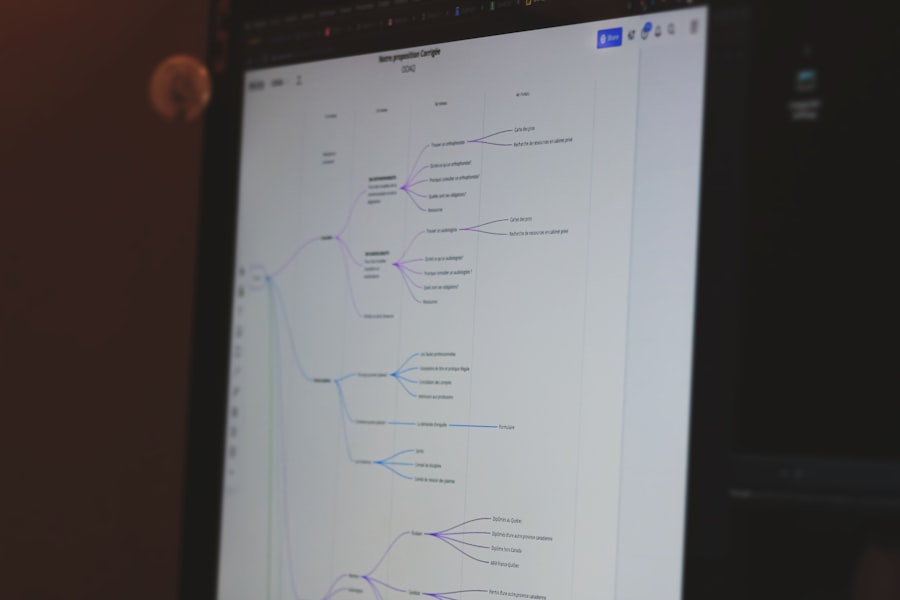When I think about MariaDB optimization, I realize that it is a multifaceted process that involves enhancing the performance and efficiency of the database management system. MariaDB, a popular open-source relational database, is known for its speed and reliability. However, to truly harness its potential, I must delve into various optimization techniques that can significantly improve query performance and resource utilization.
Understanding the underlying principles of optimization is crucial for anyone looking to manage a MariaDB instance effectively. One of the first steps in optimizing MariaDB is to comprehend how it handles data storage and retrieval. The architecture of MariaDB allows for various storage engines, each with its own strengths and weaknesses.
By familiarizing myself with these engines, I can make informed decisions about which one to use based on my specific use case. Additionally, I must consider factors such as data types, table structures, and relationships between tables, as these elements play a vital role in how efficiently the database operates. By grasping these foundational concepts, I can set the stage for more advanced optimization techniques.
Key Takeaways
- Understanding MariaDB Optimization:
- MariaDB optimization involves fine-tuning the database to improve performance and efficiency.
- It requires understanding the database structure, query execution, and configuration settings.
- Analyzing Database Performance:
- Database performance can be analyzed using tools like EXPLAIN, slow query logs, and performance schema.
- Monitoring key metrics such as CPU usage, memory usage, and disk I/O can help identify performance bottlenecks.
- Indexing Strategies for MariaDB:
- Proper indexing can significantly improve query performance by reducing the number of rows that need to be scanned.
- Indexes should be carefully chosen based on the queries being executed and the data distribution.
- Query Optimization Techniques:
- Query optimization involves writing efficient queries, avoiding unnecessary joins, and using appropriate indexing.
- Techniques like query caching and using stored procedures can also improve performance.
- Utilizing MariaDB Configuration Settings:
- MariaDB configuration settings such as buffer sizes, thread settings, and cache settings can be adjusted to optimize performance.
- Understanding the impact of each configuration setting is crucial for effective optimization.
Analyzing Database Performance
To optimize MariaDB effectively, I need to start with a thorough analysis of its performance. This involves monitoring key metrics such as query execution time, CPU usage, memory consumption, and disk I/O. By utilizing tools like the MariaDB Performance Schema and the Information Schema, I can gain valuable insights into how my database is performing.
These tools provide detailed information about query execution plans, resource usage, and potential bottlenecks that may be hindering performance. In my analysis, I often find it helpful to establish a baseline for performance metrics. By recording the normal operating conditions of my database, I can identify deviations that may indicate issues requiring attention.
For instance, if I notice a sudden spike in query execution time or an increase in CPU usage, it may signal that something is amiss. Armed with this data, I can take proactive measures to address any performance concerns before they escalate into more significant problems.
Indexing Strategies for MariaDB

One of the most effective ways to enhance the performance of my MariaDB database is through strategic indexing. Indexes are data structures that improve the speed of data retrieval operations on a database table at the cost of additional space and maintenance overhead. When I create indexes on frequently queried columns, I can significantly reduce the time it takes to execute SELECT statements.
However, I must be cautious not to over-index, as this can lead to increased write times and unnecessary complexity. In my experience, choosing the right type of index is crucial for optimizing query performance. For instance, I often use B-tree indexes for equality and range queries due to their balanced structure and efficient search capabilities.
On the other hand, full-text indexes are invaluable when dealing with large text fields where I need to perform complex searches. By carefully analyzing my query patterns and understanding the types of searches my application performs, I can tailor my indexing strategy to maximize efficiency.
Query Optimization Techniques
Query optimization is another critical aspect of MariaDB optimization that I cannot overlook. The way I write my SQL queries can have a profound impact on performance. For example, using SELECT * can lead to unnecessary data retrieval, which slows down query execution.
Instead, I focus on selecting only the columns I need, which reduces the amount of data processed and transferred. Additionally, I pay close attention to how I structure my queries. Using JOINs effectively can enhance performance when retrieving related data from multiple tables.
However, poorly designed JOINs can lead to significant slowdowns. To mitigate this risk, I often analyze the execution plans generated by MariaDB to identify any inefficiencies in my queries. By understanding how the database engine processes my requests, I can make informed adjustments that lead to faster execution times.
Utilizing MariaDB Configuration Settings
MariaDB offers a plethora of configuration settings that can be fine-tuned to optimize performance further. These settings control various aspects of the database server’s behavior, including memory allocation, caching mechanisms, and connection handling. By carefully adjusting these parameters based on my workload and hardware capabilities, I can create an environment that maximizes efficiency.
For instance, one setting that has proven beneficial in my experience is the `innodb_buffer_pool_size`. This parameter determines how much memory InnoDB allocates for caching data and indexes. By increasing this value to utilize available RAM effectively, I can significantly reduce disk I/O operations and improve overall performance.
However, it’s essential to monitor the impact of these changes closely to ensure they yield the desired results without introducing new issues.
Monitoring and Tuning MariaDB

Continuous monitoring and tuning are vital components of maintaining an optimized MariaDB environment. As my application evolves and usage patterns change, what worked well in the past may no longer be sufficient. Therefore, I make it a habit to regularly review performance metrics and adjust my optimization strategies accordingly.
I often rely on monitoring tools like Percona Monitoring and Management (PMM) or Grafana to visualize key performance indicators in real-time. These tools allow me to track query performance trends over time and identify potential bottlenecks before they become critical issues. Additionally, setting up alerts for specific thresholds helps me stay proactive in addressing performance concerns as they arise.
Scaling MariaDB for High Traffic
As my application grows and attracts more users, scaling MariaDB becomes a pressing concern. To handle high traffic effectively, I must consider both vertical and horizontal scaling strategies. Vertical scaling involves upgrading the existing hardware resources—such as adding more RAM or faster disks—to improve performance.
While this approach can yield immediate benefits, it has its limitations. On the other hand, horizontal scaling involves distributing the database load across multiple servers or instances. This can be achieved through techniques like sharding or replication.
Sharding allows me to partition my data across different servers based on specific criteria, while replication enables me to create read replicas that offload read queries from the primary server. By implementing these strategies thoughtfully, I can ensure that my MariaDB instance remains responsive even under heavy traffic conditions.
Best Practices for MariaDB Optimization
In my journey toward optimizing MariaDB, I’ve discovered several best practices that consistently yield positive results. First and foremost is maintaining an organized schema design that reflects the relationships between entities clearly. A well-structured schema not only enhances data integrity but also simplifies query writing and optimization efforts.
Another best practice is regularly updating statistics on tables and indexes. Accurate statistics help the query optimizer make informed decisions about execution plans, leading to better performance outcomes. Additionally, I find it beneficial to conduct periodic reviews of my indexing strategy to ensure it aligns with current query patterns.
Lastly, staying informed about new features and improvements in MariaDB is essential for ongoing optimization efforts. The community around MariaDB is vibrant and constantly evolving, so keeping up with updates allows me to leverage new capabilities that can enhance performance further. In conclusion, optimizing MariaDB is an ongoing process that requires a combination of understanding its architecture, analyzing performance metrics, implementing effective indexing strategies, optimizing queries, fine-tuning configuration settings, monitoring continuously, scaling appropriately for high traffic, and adhering to best practices.
By embracing these principles and remaining vigilant in my optimization efforts, I can ensure that my MariaDB instance operates at peak efficiency while meeting the demands of my applications and users alike.
For those interested in diving deeper into database optimization, a related article that complements “The Essential Guide to MariaDB Optimization” can be found on The Sheryar’s blog. This article provides additional insights and advanced techniques for optimizing database performance, making it a valuable resource for database administrators and developers alike. You can explore this further by visiting The Sheryar’s Blog.
FAQs
What is MariaDB Optimization?
MariaDB optimization refers to the process of improving the performance and efficiency of a MariaDB database system. This includes optimizing queries, indexes, server configuration, and other factors to ensure the database operates at its best.
Why is MariaDB Optimization important?
Optimizing MariaDB is important to ensure that the database performs efficiently, responds quickly to user queries, and can handle a large number of concurrent users. It can also help reduce server load, improve application performance, and save on hardware costs.
What are some common optimization techniques for MariaDB?
Common optimization techniques for MariaDB include query optimization, index optimization, server configuration tuning, caching strategies, and hardware optimization. These techniques can help improve database performance and scalability.
How can I optimize queries in MariaDB?
You can optimize queries in MariaDB by using indexes, avoiding unnecessary joins, limiting the number of rows returned, and using the EXPLAIN statement to analyze query execution plans. Additionally, rewriting complex queries and using appropriate data types can also help optimize queries.
What are some best practices for MariaDB optimization?
Some best practices for MariaDB optimization include regularly analyzing and optimizing queries, using appropriate indexing strategies, configuring the server for optimal performance, monitoring database performance, and staying updated with the latest MariaDB releases and features.
What tools are available for MariaDB optimization?
There are several tools available for MariaDB optimization, including the EXPLAIN statement for query analysis, the MariaDB Performance Schema for monitoring and analysis, and third-party tools such as Percona Toolkit and MySQLTuner for performance tuning and optimization.
